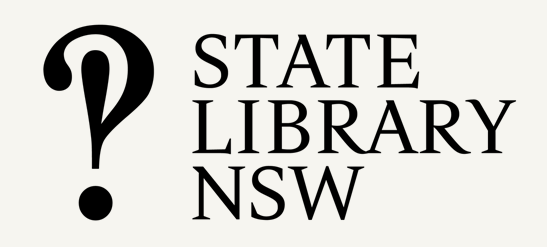Protocol 12 is about Indigenous collections in the digital environment. This includes digitised collection materials, born-digital items and digital access to materials. While increased access to collections is generally a positive aspect of the digital revolution of the past few decades, there are a few important things to consider when dealing with Indigenous materials.
As we learned in Protocol 11, digitisation and digital access can assist in the repatriation of collection materials to Aboriginal and Torres Strait Islander communities, and preservation for future generations. Digitised material must be handled and stored in keeping with Aboriginal and Torres Strait Islander cultural protocols, however, including not providing online access to items deemed to be secret, sacred or sensitive.
Libraries should consult with Aboriginal and Torres Strait Islander communities about any digital content that might be made available online, including on websites or in social media. Where material is accessible online, it should be preceded by a notice advising Aboriginal and Torres Strait Islander users of potentially sensitive or distressing content, such as images, sounds and names of deceased persons; images of people who have not yet been identified; and historical images containing nudity.
Libraries have a responsibility to educate our users of about the potential risks of sharing digital content online, such as not being able to control who accesses it or how they may re-purpose it. We need to work with communities to promote the creation, collection and appropriate management of digital materials.
In the video below, Denien Toomath talks about the importance of making digital materials accessible to communities, and how digital repatriation can help libraries gain valuable insights into the materials they hold.
Case studies
> Creating a process for cultural permissions
State Library Victoria’s Cultural Permission Program was developed to give Aboriginal and Torres Strait Islander people and communities whose ancestral material is held in the library’s heritage collections the authority to decide how that material may be used by others.
> Storylines: reconnecting collections to communities, families and individuals
Storylines is a State Library of Western Australia project that aims to break down barriers to Aboriginal and Torres Strait Islander peoples accessing collection materials, and recognise the importance of reconnecting this material to communities, families and individuals.
Further resources
Articles and presentations
Gather – State Library of New South Wales
Created with Mukurtu, Gather connects Aboriginal communities with collections and stories from the State Library of NSW.
Storylines – State Library of Western Australia
Storylines is a project to explore, identify and return Aboriginal heritage material from our collections.
Ara Iritja
“Over the last century, many visitors to the Ngaanyatjarra, Pitjantjatjara and Yankunytjatjara lands in Central Australia collected and permanently removed artefacts, photographs, film footage and sound recordings. While some of these materials were filed away in the archives of public institutions, others were ‘lost’ in family photo albums or packed away in old suitcases and boxes. Many of these materials are of great importance to Anangu (Ngaanyatjarra, Pitjantjatjara and Yankunytjatjara people). Ara Irititja (‘stories from a long time ago’) officially commenced in 1994 to repatriate ‘lost’ material for Anangu. By 2018, Ara Irititja has tracked down hundreds of thousands of historical and cultural items and makes them available to Anangu through interactive software.”
Opening Archives: Respectful Repatriation – Kimberly Christen and Mary Pugh (The American Archivist, 2011)
While digital technologies allow for items to be repatriated quickly, circulated widely, and annotated endlessly, these same technologies pose challenges to some indigenous communities who wish to add their expert voices to public collections and also maintain some traditional cultural protocols for the viewing, circulation, and reproduction of some materials. This case study examines one collaborative archival project aimed at digitally repatriating and reciprocally curating cultural heritage materials of the Plateau tribes in the Pacific Northwest.
Self-determination and archival autonomy: advocating activism – E. Daniels, J. Evans, G. McCarthy, S. McKemmish (Archival Science, 2015)
This paper explores the role of archival activism in supporting social movements linked to human rights and social justice agendas. Taking a records continuum perspective, it presents an Australian case study relating to the Stolen Generations, Former Child Migrants, Forgotten Australians and Forced Adoption communities to illustrate imperatives for advocacy and activism in support of the ‘archival autonomy’ of communities.”
Deciphering Arrernte archives: The intermingling of textual and living knowledge – Jason Gibson, Shaun Angeles, Joel Liddle (University of Hawai’i Press, 2019)
Interviews exploring some of the issues Arrernte peoples confront as they work through archives, including the limitations of conventional cataloguing requirements and the importance of reading archival texts in a way that sees them placed and tested against the knowledge of Elders, and the role of digital technologies in the future dissemination of cultural materials.
Audio and video
Creative Connections: First Nations protocols in a digital space – Terri Janke/Australia Council for the Arts (video, 2020)
Indigenous cultural and intellectual property lawyer Terri Janke talks about the considerations and restrictions around accessibility for First Nations peoples in the digital space, and how protocols can be observed and practiced online.
Mukurtu: an online dilly bag for keeping Indigenous digital archives safe – The Conversation (podcast, 2019)
Mukurtu is an online system that aims to help Indigenous communities conserve stories, videos, photographs, songs, word lists and other digital archives. In this podcast, Kirsten Thorpe and Richard Neville explain why Mukurtu is needed, how it’s being used and what’s at stake if we don’t find better ways to empower Indigenous people with the skills and tech to conserve and manage digital archives.
See also: Reconnecting collections to communities – State Library of New South Wales
The race against the clock to save rare recordings of Indigenous languages – SBS News (video, 2019)
The magnetic tapes on which thousands of hours of recordings in Indigenous languages held by the National Archives of Australia are at risk of becoming unplayable if they are not digitally preserved by 2025.
True as nan: Recognising the authority of Aboriginal memory in our GLAM spaces – Damien Webb (audio, AIATSIS, 2017)
Damien Webb talks about the State Library of Western Australia’s Storylines Project, and the impacts of engaging directly with Indigenous communities to tell their stories.
Shaun Angeles on preservation of remote Indigenous collections – National Film and Sound Archive (video, 2015)
Shaun Angeles from the Strehlow Research Centre, discusses the importance of preserving Indigenous audiovisual collections created and stored in remote communities.









